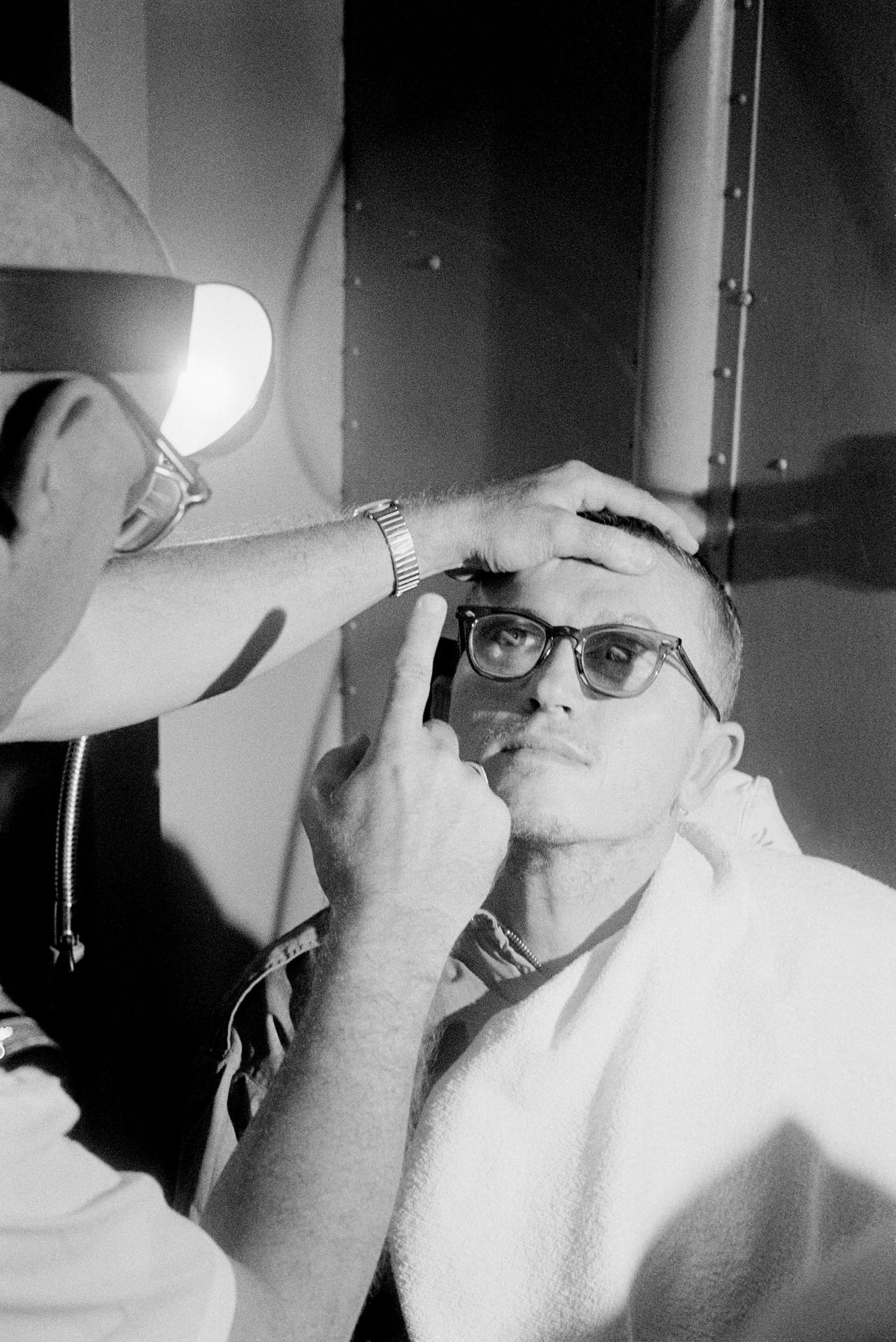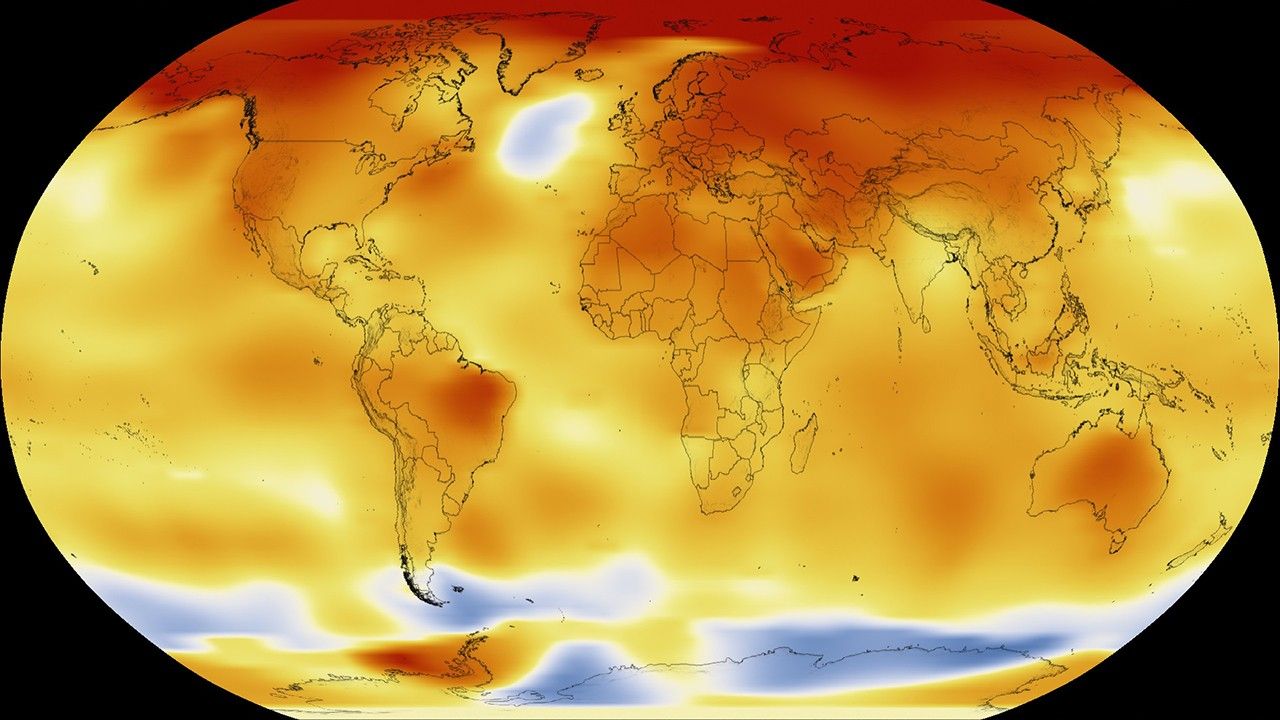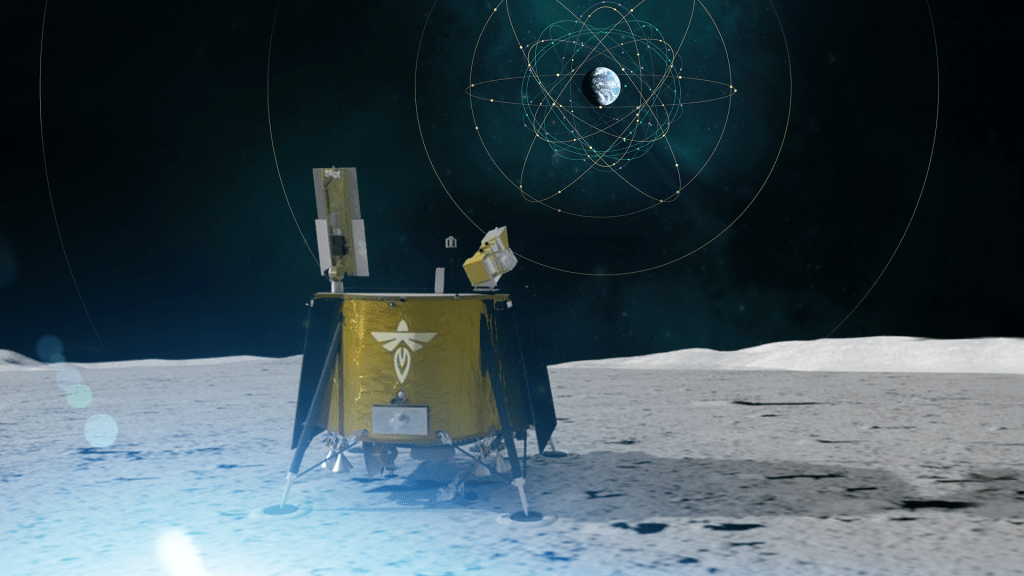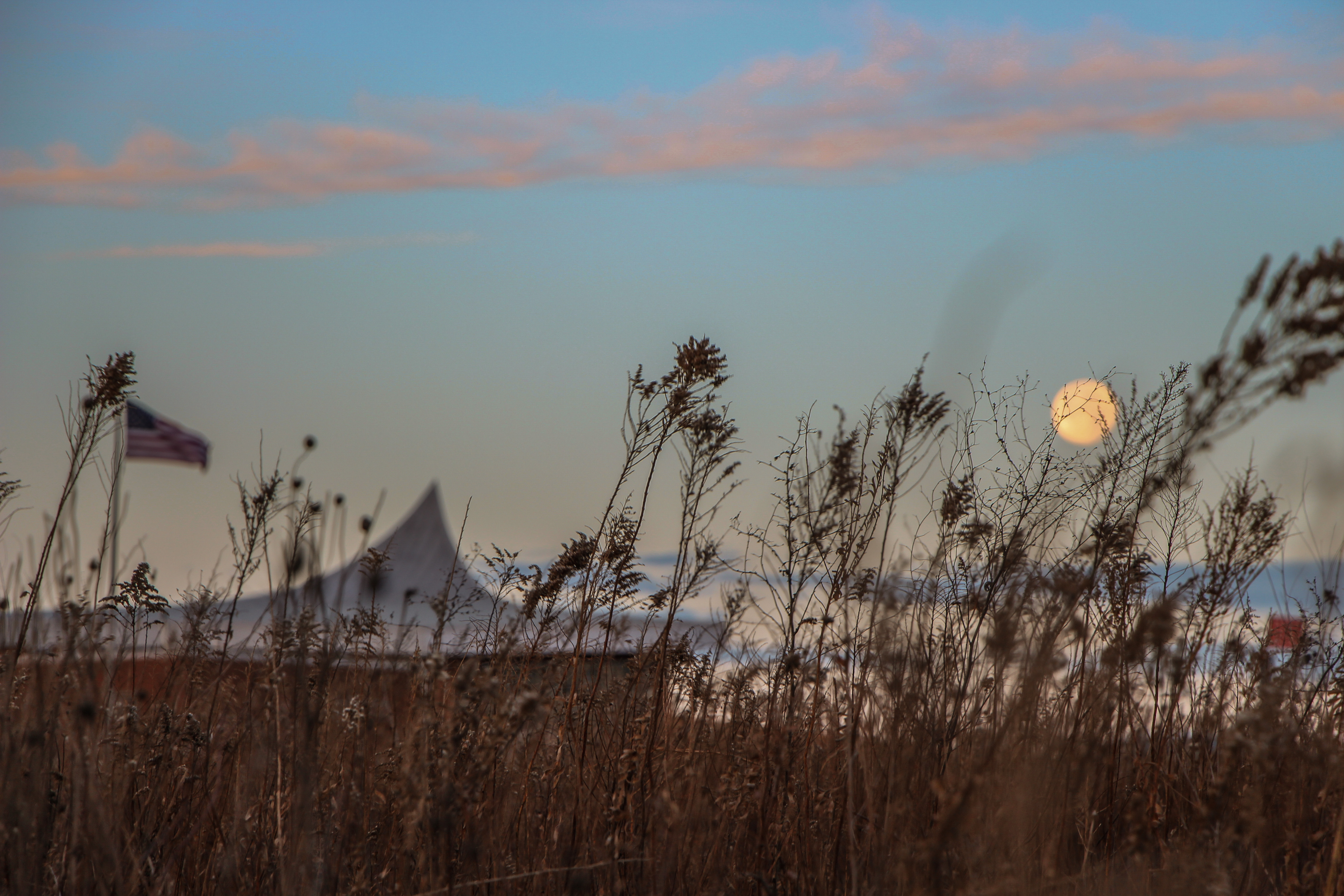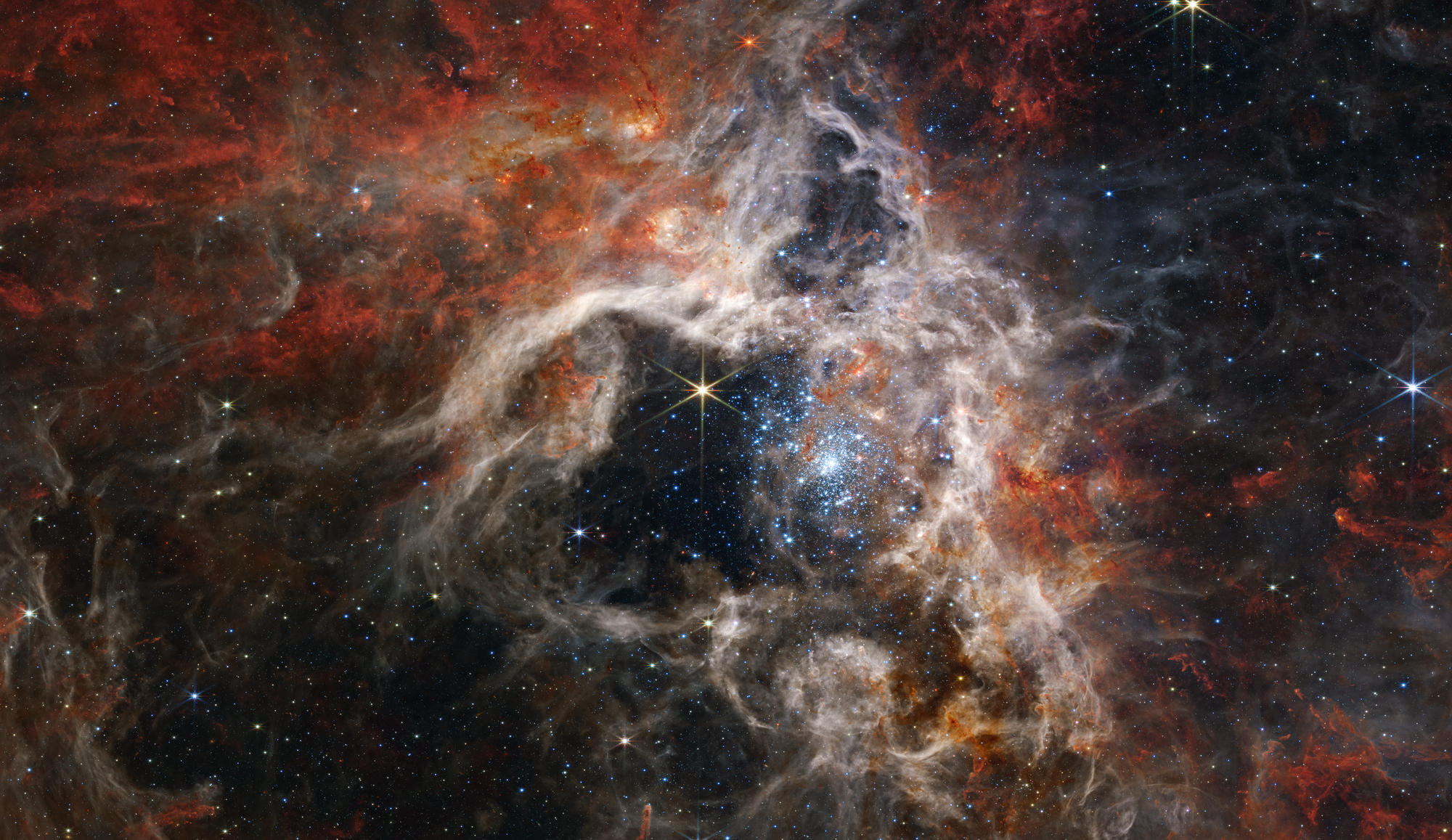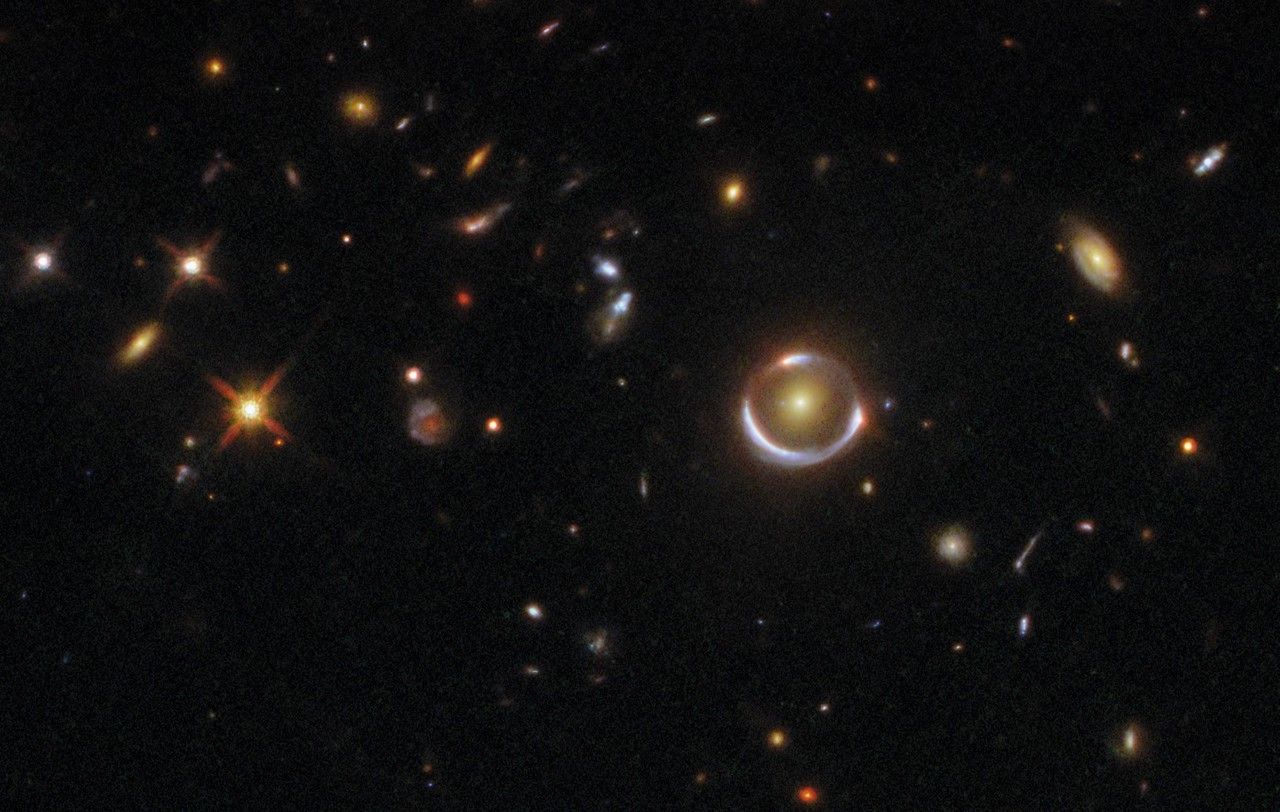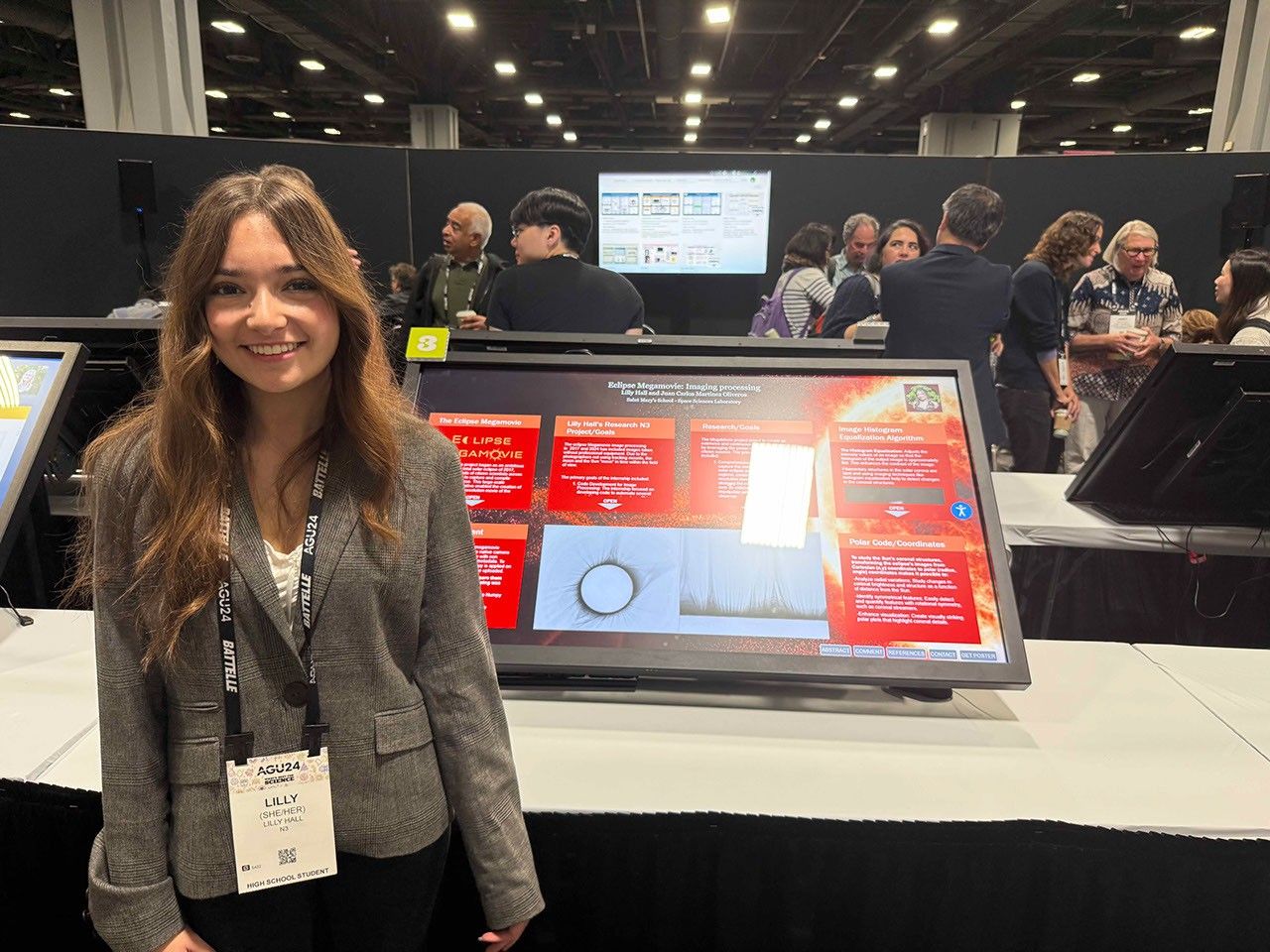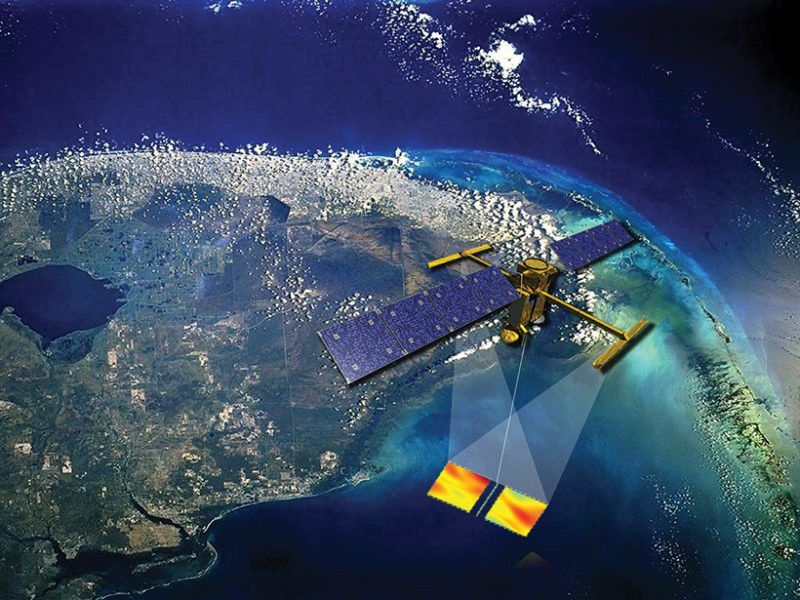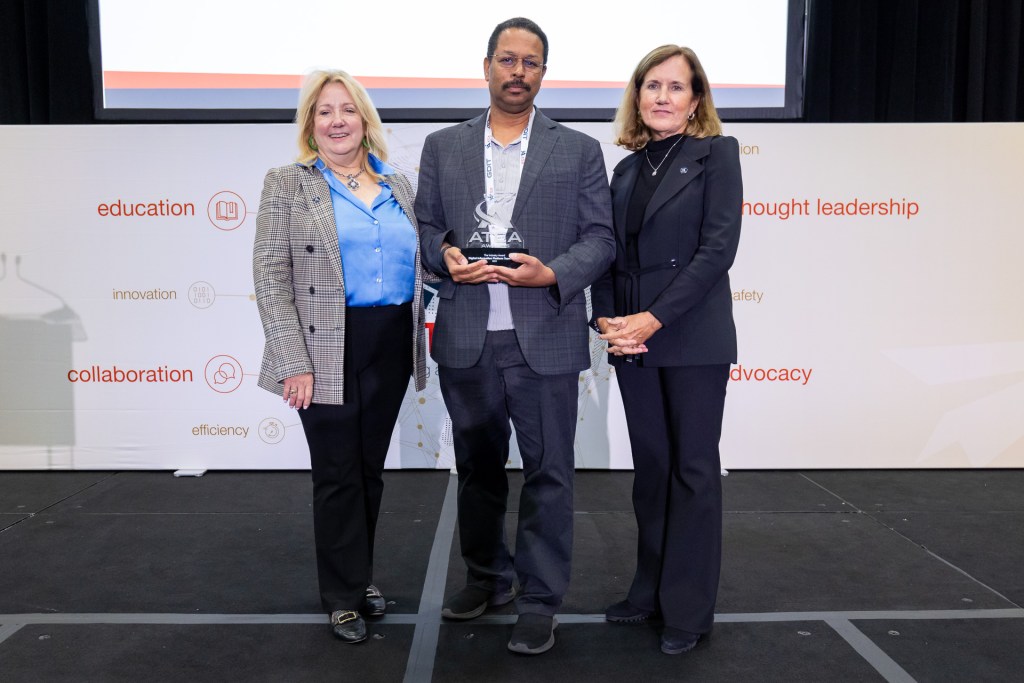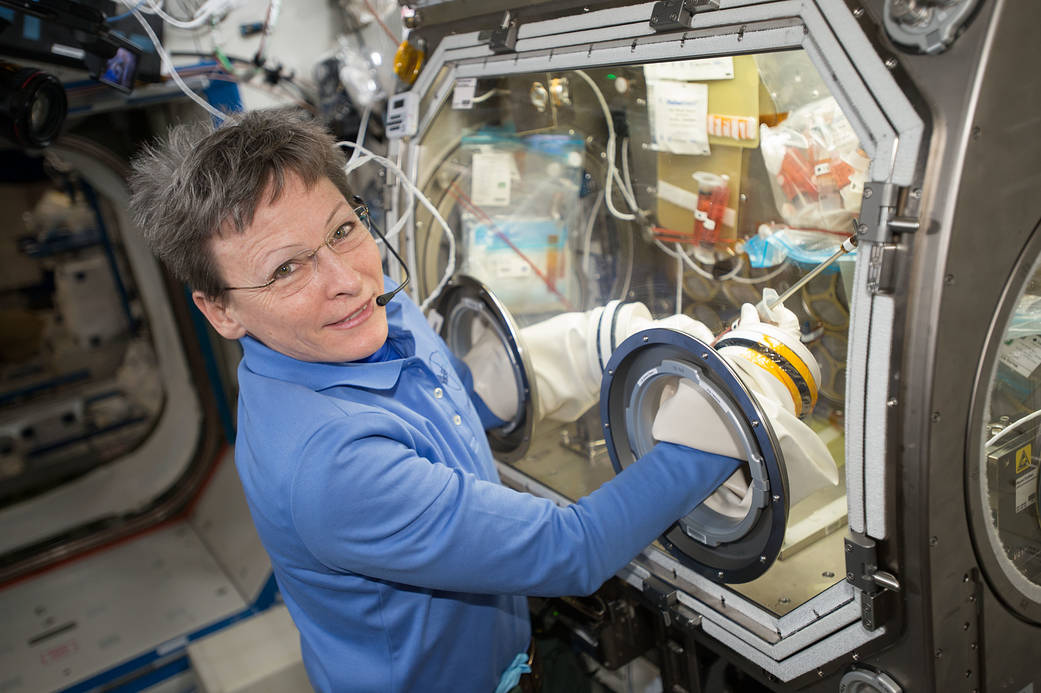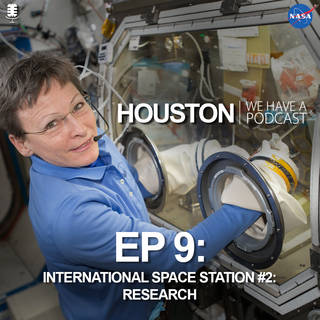
“Houston, We Have a Podcast” is the official podcast of the NASA Johnson Space Center, the home of human spaceflight, stationed in Houston, Texas. We bring space right to you! On this podcast, you’ll learn from some of the brightest minds of America’s space agency as they discuss topics in engineering, science, technology and more. You’ll hear firsthand from astronauts what it’s like to launch atop a rocket, live in space and re-enter the Earth’s atmosphere. And you’ll listen in to the more human side of space as our guests tell stories of behind-the-scenes moments never heard before.
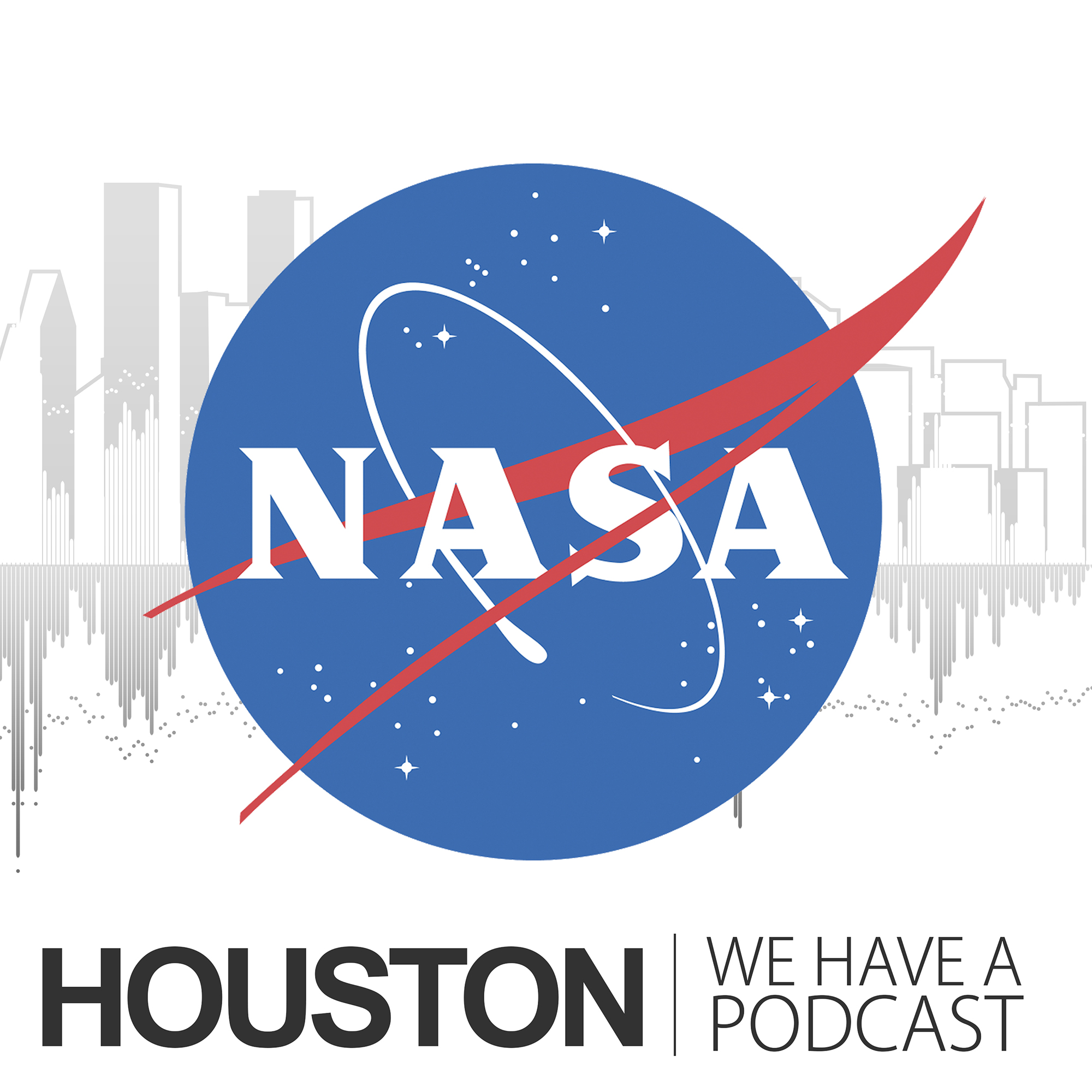
Episode 9 features Dr. Tara Ruttley, Associate Program Scientist for the Space Station, who talks about the scientific research aboard the International Space Station: the different types of science, what we’re learning and why it’s important for us here on the Earth and for sending humans into deep space. This episode was recorded on June 21, 2017.
Transcript
Gary Jordan (Host): Houston, We Have a Podcast! Welcome to the official podcast of the NASA Johnson Space Center, Episode 9: International Space Station #2 Research. I’m Gary Jordan and I’ll be your host today. So if you’re new to the podcast, this is the one where we bring on experts, NASA scientists, engineers, astronauts, and they tell you everything you need to know, all the coolest parts about NASA. So today we’re talking about space station science with Tara Ruttley. She’s the Associate Program Scientist for the Space Station here at the NASA Johnson Space Center in Houston, Texas, and we had a great discussion about what kinds of research we’re doing aboard the orbiting complex right now, what we’re learning, and why it’s important. So with no further delay, let’s go light speed and jump right ahead to our talk with dr. Tara Ruttley. Enjoy.
[ music ]
T minus five seconds and counting. Mark. [ indistinct radio chatter ]
Houston, we have a podcast.
[ music ]
Host: Well thank you for coming on and for taking the time to come on the podcast. I’m excited about this topic because you think about the International Space Station– giant, football field-sized spaceship, huge solar arrays– like, that’s cool, but what are they doing inside? So that’s kind of what I wanted to talk about today, and you’re the perfect person to do that as the associate program scientist for the international space station program. So welcome, welcome. First thing I want to say, especially in your position, we do science– you know, if someone were ever to ask you, “what do you do? What do you do up in the space station?” You’d say, “we do science. We do scientific research,” correct? Is that– am I fair in saying that?
Tara Ruttley: Yes, and then they say, “why, why? Don’t we have laboratories on earth?” And then I say, you know, “it’s this huge orbiting laboratory! Think of every experiment you’ve ever done in school.”
Host: Okay.
Tara Ruttley:“and you know, you can control temperature, and lighting, and all these different things. But the one thing you can’t control is that you always have that gravity vector there.”
Host: Stupid gravity.
Tara Ruttley:–experiments you’ve ever done– such a force to be reckoned with! “any experiment you’ve ever done on earth, what would happen if you could take gravity away from that, and what would you learn?” And then the light bulbs start to go off and they go, “oh, okay.” And the next question is what we’ll talk about for the rest of this podcast, this, “well, what do you get out of it?”
Host: Yeah, no, that’s perfect. I mean, if you could– there’s always– when you talk about scientific research, you have certain things that you just have to deal with, right? So gravity, I think, would be one of those things. It’s something you can’t– it’s a fixed– I’m sorry, I haven’t taken a science class in a long time, but is it a fixed something versus a variable?
Tara Ruttley:It is a fixed– it’s an independent variable.
Host:Okay, yeah.
Tara Ruttley:It’s something that– well, and it’s something that– well, it’s something you can’t change. So you can change temperature, pressure, lighting, heat– yeah, all those things. Yeah, but gravity, 9.81 meters per second squared– bringing you back a little bit–
Host:All right, I was coming back.
Tara Ruttley:And we’ve all– this whole planet, everything on it, every living system, every physical system has evolved around that gravity vector. So it’s what we’re used to, it’s what we can predict our theories around, and it’s what we can– it’s how we know what’s going to happen next. But so when you go up and you try all these different science experiments in the microgravity environment, yeah, it’s not always predictable. And that’s what we want to use that environment of the space station for. It’s like, what happens next if we send this up? And then, as human beings we want to find out, well, how do we take that information and leverage it to our benefits, either on earth or help us go explore further.
Host: Yeah, no, that’s a perfect overview. That’s great. That’s awesome. Well, that’s great. I mean, you’re in the perfect position, especially if you’re there. But so, what’s something– I mean, just as a general example before we start to get going– what’s something that you’re like, “hey, I wonder what would happen to this if we brought it up to–” what’s like one of the cooler things that you can think of? What would happen to blank?
Tara Ruttley:You know, I’m going to– I don’t know– I don’t have a personal– my head runs through all kinds of scenarios, so I’ve not been able to satisfy myself personally with what would happen with a particular experiment. But the one I get asked the most is about development. Development of– you know, next generation of a particular living organism. And so–
Host: Oh, living things, okay.
Tara Ruttley:Yeah, like reproducing in space, and what happens with the offspring, and do they turn out funky, or normal, or anything like that? So I mean, we’re not quite there, although there have been a couple of what we call “model organisms” that– you know, fruit flies, for example, we can send up and have reproduction, and then look at their offspring and look at anything different that might be occurring. And so fundamentally, I think I get asked that the most, because it’s something we can all relate to. It’s kind of weird in itself, but it’s also, like, it explains a little bit about who we are as living organisms in this environment.
Host: It’s so cool that we have a place to do that, too. Like, you have that question, like, what would happen to– you know, if we were to have living things reproduce in space? Oh, that’s right– we have a laboratory where we can test that. That’s really cool.
Tara Ruttley:And it’s– I have to say, you know, I’ve been a space geek my whole life, and I’ve watched all the shuttle experiment missions and the development of ISS. And being a scientist as I am, I have to say that now is the golden age for space research– more than ever before and probably more than we’ll ever see again. Now is the time.
Host: Well, we’ve got a gigantic laboratory to do it, so I can see why it’s the golden age.
Tara Ruttley:Yeah, so by the way, for anybody who’s listening who’s a researcher or a student, if you have an idea for something that you think you could do in space, we’re open– we want that right now. We’re out there trying to get the best to use this platform.
Host: Ooh, okay. All right, we’ll have to– at the very end of the podcast we do like a– we pitch where they can go for more information.
Tara Ruttley:Yeah, I’ll be happy to give it to you.
Host: I’ll make a note to say where they can go– researchers. Okay, cool. So you know, one of the experiments that I always think about is– not necessarily experiments, but like, what would you want to send up to space that would look cool? And like, the pictures of water up there.
Tara Ruttley:Oh, yeah.
Host: They are just so cool. Like, you know, you think water splashing, maybe sticking to stuff, falling– waterfalls– but it doesn’t fall. It forms into like a ball, right?
Tara Ruttley:I love that, yeah. So that’s a great example. That’s one of the most highly visible phenomena that always comes out of space station. And you’re always seeing astronauts play with it, mess around with it, but the really interesting thing about fluid behavior, water behavior in space is that for decades we’ve been launching to space, but we’ve never had any models, software models, or models of fluid behavior that– based on the microgravity environment that we could build predictions on. So for example, if we want– you know, fluid tends to hide– you know, crawl up cracks and crevices in microgravity. On earth, it’s going to sit in your glass. You can stare at it and know it’s going nowhere.
Host: That’s good.
Tara Ruttley:Yeah, it’s good, yeah. That’s how we work on earth, but in space, that stuff gets everywhere.
Host: Right.
Tara Ruttley:And you could potentially lose, you know, important parts of it. It’s a precious resource, fluid, up in space, whether it’s a propellant or it’s water. And so we have never created the most efficient propellant tanks, for example, based on the behavior of water or propellant in space. So we had– really one of my favorite experiments was a very elegant, simple, handheld experiment developed by Mark Weislogel out at Portland state university. And he’s a phenomenon with fluid behavior. And what we got from his experiments was a whole new set of open-source code, now, understanding how fluid behaves in space in different geometries of containers– so a square, a triangle, a honeycomb– whatever.
Host: Oh.
Tara Ruttley:He’s got all those models, and now, if you as a researcher– or anyone interested in building a propellant tank or a fluid tank for space– have a cad model. You can go stick your design into that software program and see how fluid’s going to behave in your system.
Host: Whoa.
Tara Ruttley:Yeah, and so for the first time ever, we have these models that we can design more efficient propellant tanks, more efficient water handling systems. That’s going to help us explore. Now, also, because we are getting a better handle on fluid behavior in space, we’re also able to apply it to ground watering of our agriculture.
Host: Oh, cool.
Tara Ruttley:The way that plants take up water in the soil, it’s all the same– it’s capillary flow, it’s capillary action, the way that water moves through a medium to get to its source. Because we took gravity out, we can really focus on looking at capillary behavior. And now we can apply it to ground-based watering systems, we can apply it to tiny little lab on chips– anything that uses fluid movement and you don’t want to use a battery, you want to leverage gravity. I mean, all kinds of advancements are coming out of this simple, elegant series of research that came out of ISS. So it’s really, really cool.
Host: That’s amazing. So going back, those cad models. Is that assuming your system is in a weightless environment, or is that for any system?
Tara Ruttley:That’s assuming that you’re designing for a weightless environment.
Host: I see, okay, cool.
Tara Ruttley:So if you want to design for the next vehicle that, you know, that we launch to wherever– mars, or station, or whatever– or if you’re a student and you want to design an experiment for space station and it’s going to have fluid in it, you can take your model and stick it in there and see how it behaves. It’s great stuff.
Host: That’s awesome. Yeah, I’ve seen some of those experiments, too, and they’re really cool. I mean, it’s something you wouldn’t normally think about– you know, you put fuel in a rocket and you launch it, because the fuel’s going to go down to the bottom. But in a weightless environment, it’s not– it’s going to float around, and all of a sudden you’ve got fuel coming out whenever it happens to snap to that side, but you’ve got to figure out a path in a weightless environment to do that.
Tara Ruttley:Wicking, wicking, wicking.
Host: Wicking, yeah. Very cool. So another one before we go on kind of the overall kind of research kind of thing is, you know, when I see fire in space– those fire experiments that they’re doing, it’s like a little spark, and then it forms this tiny, like, faint blue ball.
Tara Ruttley:Yeah.
Host: So what are we learning from fire?
Tara Ruttley:So, yeah, so another highly visual one– fire and water, our basic needs.
Host: Well, those are also the first ones that come to mind for me.
Tara Ruttley:It’s totally cool, yeah. So we do combustion studies in space because when you take that gravity vector away, you know, the way a flame burns it’s got lots of different layers and it puts off lots of different particles, so to speak. And there are people who study that on earth– like, their whole lives people are studying flames, just like those who are studying bubbles. Because we here on earth want to learn how to better detect fires, we want to be able to better put them out.
Host: Right.
Tara Ruttley:But also in space we want to do the same, for different reasons.
Host: That’s fair, yeah.
Tara Ruttley:And so how do flames behave in space? Well, we’ve been studying those for decades– in fact, way beyond– before space station, even. But now we have this huge facility dedicated within the laboratory for ongoing experiments. And so, you know, if you’ve seen the images, you said, a little– the way flames burn in tiny little balls, blue, tiny little bulbs– you don’t have that candle-like peak at the top.
Host: Right.
Tara Ruttley:Right, because in space there’s no convection, there’s no– there’s no– think about it– there’s no density, there’s no mass– there’s mass, but there’s not relative density. So you can’t have– on earth, your hot air will rise in a flame.
Host: Right.
Tara Ruttley:And then the cold air will sink to the bottom, and then rise up again, right. But there’s no sinking in space. Everything– there’s no relative density. So you don’t have convection– that’s what that is.
Host: Got it.
Tara Ruttley:So now, in space you don’t have hot air rising, and your flame burns in a little ball until it’s extinguished. Now, a really interesting piece of that is we have found, in burning some of our fluid– gasoline, so to speak, or our fluid propellants– in space is that we’ve seen extinguishing, as normal. And then in some cases, we’ve seen all of a sudden a reignition event.
Host: Whoa.
Tara Ruttley:So you think the fire’s out, and then– boom– it’s back again.
Host: Yeah.
Tara Ruttley:And that kind of made our researchers scratch their head and open up a brand new path of research on ISS that we weren’t anticipating. But this kind of phenomenon is– they’ve determined– is called a cold flame.
Host: Ah, yes.
Tara Ruttley:So you have the ignition event, which is a thermal heat flame, the secondary cold flame event is a chemical flame. It’s really a result of recombining of elements in the atmosphere under those certain environmental conditions. And it’s important to us to understand in space because, jeez, you think you put the flame out, but what if your pressures– and you’ve still got a little bit of mixing there.
Host: Right. And is it invisible, or is it a visible flame?
Tara Ruttley:It’s a visible flame.
Host: Okay, it is, okay.
Tara Ruttley:Yeah, and it shows up as this pretty toroidal cloud– a different color and everything.
Host: Oh, okay.
Tara Ruttley:However, you’ve got a good point– there are some cameras in that facility that we use to look at different levels of the flame and what we can’t see visually as well. And all those images go back down to the earth, and the investigators– there’s plenty, plenty of data to look at for those investigators.
Host: Wow.
Tara Ruttley:Yeah, it’s really fun.
Host: So I mean, you– these are just a couple of them, right? So just– we’re talking about the flame experiment, and we talked briefly about life reproducing sort of phenomenon, but you know, there’s a lot going on. At any given day, how many experiments are going on on the space station?
Tara Ruttley:It’s hard to say by day, because some take longer than others, but we track them in a six-month expedition period.
Host: Okay.
Tara Ruttley:And so there are, at any one time, over six months’ worth of about 250 different investigations.
Host:Wow.
Tara Ruttley:That six crew members are doing on orbit. And they represent hundreds of scientists on the ground, by the way.
Host: That’s amazing.
Tara Ruttley:Yeah, so that always gets me, every time– those numbers, like 300-800 scientists on the ground every six months are getting their science represented by those six crew members.
Host: Wow.
Tara Ruttley:No pressure!
Host: Yeah, for real. So is it the astronauts that are working all of these experiments? Or are some of them kind of running on their own?
Tara Ruttley:Both.
Host: Oh, okay.
Tara Ruttley:So best bet is if you’re going to create an experiment for station, if it’s automated all the better.
Host: Right.
Tara Ruttley:And then if it’s automated, you as the investigator could probably integrate your software into your computers and work with mission control to operate that.
Host: Whoa.
Tara Ruttley:But some of these things are so delicate, especially the living organisms, that yeah, they require crew time. And so we prioritize the science and make sure everybody’s stuff gets done. And we log it all, we capture it all, and we turn out metrics to say, “oh, this much got done.”
Host: It’s just good science, right?
Tara Ruttley:Yeah, it’s just good science management, too. Yes, that’s right.
Host: Yeah.
Tara Ruttley:Yeah.
Host: You’ve got to do that. Okay, so some of them do require astronaut time. And so I guess is this most of an astronaut’s day is up on the space station? They are just going from research experiment to research experiment– is that what’s happening?
Tara Ruttley:So it depends on the crew member, but yeah, it’s– the crew is scheduled, I think, for eight hours of work day. And I think between all of the crew members on orbit, they’ll represent anywhere from 35-40 hours– they’ll get about 35-40 hours as the target done per week of science. But we have been averaging– we have had weeks of 70 hours of science done, too.
Host: Whoa.
Tara Ruttley:So it depends on the visiting vehicle frequency– do we have new science coming or cargo that’s being delivered? Do we have crew change-out with new crew members?
Host: Right, yeah, that can get in the way.
Tara Ruttley:Some people are coming up to speed, and do we have an anomaly on orbit that they now need to go do an EVA?
Host: Oh, right.
Tara Ruttley:So all of these things need to be factored so it varies, but our goal is about 40 hours a week. But we have repeatedly hit 70, at least 70 hours.
Host: That’s amazing. And what’s cool– coming up here, we’re going to have a lot more U.S. Crew members, a lot more time to dedicate to some of these U.S. Experiments, so is that going to skyrocket even beyond 70 maybe?
Tara Ruttley:Yeah!
Host: That’s awesome.
Tara Ruttley:So we’re looking at at least, at least 80 hours. That’s like two full time people working full time science in a week, right?
Host: Wow.
Tara Ruttley:That’s at least, so we’re anxious to see what happens there.
Host:Yeah, for real. Okay, so we’ve got a lot of crew time. We’ve got a lot of experiments that we’re running autonomously. So in general– you know, we kind of hinted at this, but the space station, one of the main benefits is that you can take away gravity in one of your experiments and you can kind of mess with that. But you know, what are some of the other things that makes the international space station such a nice place? The one that comes to mind is perspective, obviously. You’ve got– you’re 250 miles above the earth, so you can look down, so you’ve got some observational things. But what other kinds of things, you know, is good about putting research up there?
Tara Ruttley:Yeah, so there’s a few. Our earth observation is a great example, but you know, then you get asked, “well, what about the other satellites? Aren’t there lots of other satellites observing the earth?”
Host: Sure.
Tara Ruttley:Well, yeah, but space station is a big satellite with lots of data capability, and a trajectory that’s different than any other satellite that we would call synchronous, geosynchronous satellites.
Host: Oh, okay.
Tara Ruttley:So station has a trajectory that can circle the earth once every 90 minutes, and by the time it’s through a complete rotation, I should say, it covers about 90% of the earth’s surface.
Host: All right.
Tara Ruttley:So 99.5% it can take images. That’s more than any one satellite can do on its own. Plus, it’s got human beings up there looking down and finding things happening that, you know, that satellites– you know, there’s nothing like the human eye to see a flood, or an oil spill, or a volcanic eruption before anything else.
Host: And that’s happened before, right?
Tara Ruttley:Yeah, it has happened before. I heard a story of one of the crew members calling down to USGS saying, “um, I’m seeing a volcanic eruption.” And they’re like, “no, I don’t–” they thought it was a hoax.
Host: I think it was– I think it was Jeff Williams.
Tara Ruttley:Williams, yeah.
Host: Yeah, it was, yeah.
Tara Ruttley:Okay, we heard the same story, yeah, yeah.
Host: And then they were able to actually communicate all that. He was like, “hey, I think there’s– think there’s a volcano erupting.” Because he took a picture of it.
Tara Ruttley:That’s right, and you can get the message out for those disaster response networks much more quickly.
Host: Yeah.
Tara Ruttley:But also, ISS is a huge platform for data. So if you’ve got something like the alpha magnetic spectrometer that’s looking for dark matter–
Host: Oh yeah.
Tara Ruttley:You know–
Host: Love that one.
Tara Ruttley:The fact that that– it’s a data hog. It’s looking for– it’s, you know, absorbing tons and tons of cosmic rays and sending I don’t even know what– giga, triga– I don’t know– bytes of data– gigatrigabyte, yeah– teased for that one.
Host: Well, gigatrigabyte’s awesome.
Tara Ruttley:But down to earth, and only ISS can handle that kind of data and power demand to keep something up there for so long.
Host: Oh!
Tara Ruttley:–those kind of cosmic behaviors.
Host: Wow.
Tara Ruttley:But also, you can put experiments on the outside of space station to expose them to atomic oxygen, or the ultraviolet radiation, or the intense thermal swings.
Host: Yeah.
Tara Ruttley:We have put different types of material out there before, and get them home, and look at the damage caused by external environments. And for example, one of those was a paint that’s now been used on the mars rover curiosity, who’s up there. It’s protecting its power, its critical power unit.
Host: Right.
Tara Ruttley:That was tested on station first.
Host: Oh, you put a bunch of paint outside and see which one lasted best, okay. Very cool.
Tara Ruttley:And we do that with spacesuit pieces and vehicle pieces.
Host: Yeah.
Tara Ruttley:We’ve got stuff on– paint on the SpaceX launch vehicles that were tested on station. And we’ve actually flown microorganisms on the outside of space station, too, to see how they’ll survive, and little types of endospores, little, you know, living organisms that go into hibernation. Then bring them home and find out what space did to them, you know?
Host: Wow.
Tara Ruttley:So it’s got that external platform unlike anything other.
Host: So I’m guessing bringing them home is also a pretty good thing to do, right, because you can play with something, but then you can also get it back down to earth– is that a unique capability of the ISS?
Tara Ruttley:Yeah, so the ultimate goal for any researcher is to get your sample home– if you’re a life scientist or a physical scientist. And that is– that is enabled by the SpaceX vehicle. SpaceX can return samples.
Host: Right, okay.
Tara Ruttley:But there are also other ways to get your data. So if you’re a technologist, or, you know, visual– if you just need images, or video, or zeroes and ones, data–
Host: Just downlink it, right?
Tara Ruttley:Downlink it from station, and it’s been– those are ways to do it, too. Now, there was a technology experiment called opals, which was tested on station– I believe it may have just wrapped up. They met their objectives. But they’re looking at using laser optical technology to send data down in the form of high speed lasers to– yeah, right, to the ground, yeah.
Host: Awesome!
Tara Ruttley:So that– and they used a couple of different ISS investigations as a way to pipeline that data and test it out.
Host: Sweet.
Tara Ruttley:So high speed data transfer via lasers– you know, cool stuff. All that’s happening at the same time.
Host: Yeah, that’s amazing. Okay, so, you know, there’s a lot of these experiments at all different times, right? We’re talking about observational research, talking about satellite– you get the benefit of covering the earth. You know, what are some of the categories of experiments that we’re sending up there?
Tara Ruttley:Yeah, so I’ll start with the first one, which is my favorite, which are all the human experiments that happen.
Host: Humans.
Tara Ruttley:There’s nothing like the crew members on station, right? They’re not robots. They are the human beings that will go and explore further. And so we’ve known for decades there are lots of changes that happen throughout the entire system. Because why? We’re creatures of the gravity environment– forever.
Host: Right.
Tara Ruttley:That’s how we’ve evolved. So any system in the human body that you can think of is– has to adapt to the spaceflight environment. There’s an effect. So we study the neurovestibular or the balance systems. We– because they change. We study the bone. They’re– since I was a kid– I mean, we’ve all known there’s been bone loss if you don’t use your bones. Think about why we have bones. It’s because we have to stand up against gravity– and our muscles, too.
Host: Yeah.
Tara Ruttley:If you don’t use that in space, they’re– the body’s pretty efficient at getting rid of it.
Host: Yeah, your body needs to conserve energy, and if it doesn’t need bones, just get rid of that, put the energy somewhere else.
Tara Ruttley:Exactly. So where do we get the energy? We keep– tell our body we need energy through exercise.
Host: Oh, okay.
Tara Ruttley:And so we do resistive exercise and cardiovascular training on orbit to help mitigate that. And very interesting finding: we’ve been able to maintain bone mineral density now, for the first time ever, as a result of the work that we’ve been doing on station.
Host: That’s amazing. Over the course of a six-month–
Tara Ruttley:Yeah.
Host: Even, in the case of Scott Kelly, a year long, right?
Tara Ruttley:Yeah, wasn’t as bad as it could’ve been.
Host: Yeah.
Tara Ruttley:Yeah, so kudos to us for that.
Host: Very cool.
Tara Ruttley:And you know, the immune system– so anything in the human body, right? Other than the human body, there are changes in biology, the living systems. We– the fruit flies, for example, our model organisms that are used in laboratories, we can look at changes in their genetics as a result of spaceflight, what their babies would look like, or how they would behave. We can send up tiny little worms that are called c. Elegans and look at how they behave, or even infect them in space with a certain type of bacteria.
Host: To see how the immune system works or something?
Tara Ruttley:Well, you can study their immune system, but you can also try to figure out what makes that bacteria aggressive.
Host: Oh, so study the bacteria.
Tara Ruttley:Why does it infect you in the first place?
Host: Wow.
Tara Ruttley:What is it? And so we’ve actually found that microgravity has up-regulated– is what we call it– genes to make certain bacteria more yucky and make you sick quicker. So you know, all kinds of– we send up rodents to look at the behavior in some of the systems in mice, and so any living system– the microbiology component of it is fascinating, too. We sample the environment on a regular basis– the air, the water, the surface.
Host: Oh, yeah.
Tara Ruttley:And any new findings in bacteria or fungi that might be showing up that are–
Host: Within the environment– yeah, within the habitable environment of the space station.
Tara Ruttley:And especially since we see that our crew members have evidence of a suppressed immune system, how does that– if anything wacky shows up, how is that going to affect their immune system?
Host: Yeah.
Tara Ruttley:So the interesting microbiota is really fascinating, those kind of studies. But we also do technological studies, so technology. We use space station as a platform to test what we want to use to explore further. So for example, the big one right now is beam, right??
Host: Oh, yeah!
Tara Ruttley:The big inflatable one that’s up there right now.
Host: That’s really cool– expandable technology, expandable modules.
Tara Ruttley:Yeah.
Host: I love that.
Tara Ruttley:And that’s– it’s huge.
Host: Yeah, it is. And you can get them to be way bigger– that’s the whole value add of that, right, is you can launch something with a similar weight but just kind of pack it down and then expand it in space so you have way more volume. That’s awesome– you can make gigantic space habitats with that. That’s really awesome.
Tara Ruttley:It’s really– it’s got great potential. So it’s one of our technology development initiatives. But it’s also– we also test out new gas analyzers or air monitors up on orbit, or ways to better service satellites that end up out there dead and were never intended to be serviced– but if we want to go to mars, for example, maybe we want technology to service, you know, stations in between us and mars.
Host: Oh, yeah.
Tara Ruttley:Right, so you’ve got these little waypoints that give you extra food or extra fuel or something.
Host: Like space gas stations slash convenience stores.
Tara Ruttley:Yeah, who knows. So we do some of those technology evaluations to create new tools and processes that could possibly get us there, too. So technology, but we also have a lot of education that happens.
Host: Very important.
Tara Ruttley:Yeah, we’ve got students sending up their own experiments, and different– lots of different opportunities on ISS through NanoRacks and student organizations. High schools are going fundraising, you know, their own money to send their own experiments on ISS. It’s that accessible.
Host: Wow, very cool.
Tara Ruttley:And we’ve had 5th graders do that, too. There are a couple of formal programs. One’s called the sally ride EarthKam.
Host: EarthKam, right.
Tara Ruttley:Launched out of the U.S. Space and rocket center in Alabama, where, if you’re interested, as just a regular student, you just go register with that program and you say, “I want space station to take an image of x marks the spot,” and they will put you in queue, get that image, and contact you when it’s available.
Host: Wow.
Tara Ruttley:And you know, ham radio, for those of you who like, you know, using the ham radio, if you’re a ham radio specialist, there are certain opportunities to call the space station crew members on a ham radio and just ask questions. So that’s all ongoing, and some of the best experiments are student experiments, because they ask the weird questions that– the what-if questions, right? They’re still in that phase of early discovery.
Host: Right.
Tara Ruttley:Some of our established researchers have their own path to research and their own questions they want to ask that helps benefit the research they’re doing, which will ultimately get to us here on earth, too.
Host: Sure.
Tara Ruttley:So there are lots of opportunity– and in fact, even the researchers who don’t have a goal of education, there’s always a student involved one way or another, whether it’s undergraduates or graduates crunching numbers, or has a dissertation or thesis, or something associated with that. So we are always interacting with students.
Host: Wow.
Tara Ruttley:So lots of education. The physical sciences– anything from flames to fluids, to tiny little particles called colloids in a suspension of fluids.
Host: Oh, okay.
Tara Ruttley:Complex fluids, or non-Newtonian fluids, or solids, alloy behaviors– can you melt two materials together and create something new? We’ve got capabilities for those kind of metals on space station, too. We’ve got furnaces.
Host: Ooh.
Tara Ruttley:We can levitate materials, too.
Host: What!
Tara Ruttley:Yeah, levitate them on ISS, and basically you have containerless processing, so you can process materials– metals or solids– without it ever touching a container.
Host: Doesn’t have to touch anything, cool.
Tara Ruttley:Yeah, so all the kinds of sci-fi, wacky stuff you can imagine happening in microgravity, we’re almost doing almost all of it.
Host: Yeah.
Tara Ruttley:We’re doing a lot of cool stuff.
Host: Well, 250– you’ve got– I mean, it’s got to come from somewhere, right? So you’ve got it from every different type of science. That’s just amazing, all the things you can accomplish, and I’m excited to see what they’re all going to do when all the four crew members are up there.
Tara Ruttley:They’re never bored, I’ll tell you. Those guys are never bored. And the interesting thing with the astronauts, too, is they take personal ownership of getting this stuff implemented. Like, they’re trained on the research. They know they’re the proxy scientist for the guys on the ground, the guys and gals on the ground.
Host: Yeah.
Tara Ruttley:And they are serious about getting it done.
Host: That’s awesome.
Tara Ruttley:And then they take joy in the work that they do, too, and oftentimes will ask, “can we do more of that? Can we do, you know, more of this, more of that?”
Host: Aw, very cool. Yeah, I think one of my favorites was when Kate robins did the DNA sequencing, right? Because she has a science background, and when she did– aw man, that was– it was just cool.
Tara Ruttley:Yeah, and the interesting thing about Kate, too– when she came back, she’s sharing all the knowledge with those of us on the ground who can enable us to do even more of what she did. It’s like– wow, why didn’t we think of this– well, we did– we think we thought of this before, but Kate comes back and she’s like, “no, no, seriously, you can do it like this. This is exactly how I did it.”
Host: Well she did it right because she has the perspective– she was the one running it.
Tara Ruttley:Yeah, so unique. So it’s such a resource we’re excited about.
Host: Awesome.
Tara Ruttley:Yeah, good stuff.
Host: I love it. DNA sequencing, though, that’s a cool one. That one’s– the purpose of that is to make real time decision making, right?
Tara Ruttley:Yeah.
Host: So you can understand how genetics change over time, but real time you’re still getting data out. That’s awesome.
Tara Ruttley:I mean, on earth, it’s just– that whole– the whole DNA genetics sequencing, you can’t even keep up because technology and processes are evolving so quickly. If you’ve kept up with any of that stuff, the human genome and new findings in DNA and RNA, and all the things in between– I mean, even since I’ve graduated, there’s new stuff.
Host: Yeah.
Tara Ruttley:And that I don’t even know. But so nasa now is on the cutting edge of keeping up with what’s happening on earth, or at least watching. ISS is watching and trying to figure out what’s important for researchers, and trying to bring that to the laboratory to invite those researchers to now do this in a microgravity environment. So there’s interesting changes that can happen to your genetics throughout your lifetime that affect your genes inside of you as you live, and then you could pass on to your children. And so–
Host: They change naturally? Or they change because of influences?
Tara Ruttley:It’s called epigenetics– because of influences, external influences.
Host: Interesting.
Tara Ruttley:It’s really interesting.
Host: Wow.
Tara Ruttley:Even the stress of an environment can change some of your genetic outcomes, and pass on to your children.
Host: Oh, no way!
Tara Ruttley:Yeah.
Host: Okay, so I’ve got to remember to relax.
Tara Ruttley:Relax, dude. If you’ve got a future with children, y’all need to relax. Try to chill.
Host: Yeah.
Tara Ruttley:But microgravity could be one of those, and what does that all mean? Well, I don’t know. If you can do it real time in space on ISS, and you can look at data from DNA real time, well, you know what it looked like yesterday– now you’ll know what it looked like today. Those are all tools that researchers are interested in for various, lots of different reasons on earth.
Host: It’s amazing.
Tara Ruttley:But also, what happens with our crew members is we stay up longer and longer. And we want to go to mars– what happens to our genes?
Host: Yeah, you’ve got to know all that stuff.
Tara Ruttley:Yeah.
Host: I mean, there’s a lot of different experiments going on like we talked about, but how is everyone getting them on space station? I know there’s an organization called CASIS, right? Do they kind of help with that?
Tara Ruttley:Yeah, they kind of help. No, they’re the big help, yes.
Host: They’re the big help, okay.
Tara Ruttley:Yeah, so certain parts of the– well, the united– I should say the united states assets on the space station are considered a national laboratory, a united states national laboratory. That’s a designation that maybe 12 or 13 other laboratories in America are given, and that means they’re special– there’s something unique about them that nobody else can offer. But it also means that now we have one in space, and it’s the national laboratory on ISS. And its unique resources are everything I just explained.
Host: Right.
Tara Ruttley:But also, now it opens up access to non-nasa users. So researchers from other government agencies, researchers from academia, researchers from commercial industry, student, you off the street who has a really great idea that’s feasible– it’s open to all of you to propose your research to get on the international space station now. CASIS is the center for the advancement of science in space.
Host: Love acronyms.
Tara Ruttley:Yes, we have acronyms– probably with an acronym.
Host: But that’s an organization, right?
Tara Ruttley:Yes, they’re an organization that manages that national laboratory component. So when you have a great idea, you go to www.iss-CASIS.org and you’ll find out that there’s a flow– you get into the research process and you propose your ideas. And either CASIS has opportunities open, or you propose ideas. And they’re looking for all– I hate the cliché “best and the brightest,” but it’s true– that’s what we want.
Host: Yeah.
Tara Ruttley:Like I said, to be able to use this laboratory now is like more important than ever.
Host: Right.
Tara Ruttley:And a lot of people don’t even know that they could do this. They think space is so inaccessible. And I know– I go around and I talk to researchers, and the look on their face is like your look right now! You’re like, “it’s so accessible! What do you mean I can just come up with an idea?”
Host: Well, how about this– how about we do a whole podcast episode on ISS research and tell them how to get there? That’d be cool.
Tara Ruttley:Yeah, we can invite some CASIS people.
Host: All right, somebody write that down.
Tara Ruttley:Yeah, we’ve got this– action to us. We’ve got an action. That’s great.
Host: Very cool. Okay, so they go through CASIS, and CASIS makes it easy for them to get it on the station, and they’ll walk them through the whole process, and then they can use the national lab for whatever idea they have.
Tara Ruttley:That’s the whole point.
Host: That’s awesome. So I mean, when you talk about all this different research– and a lot of it, like you said, you know, a lot of them– we want to go to mars, so we’ve got to figure out, we’ve got to prepare, you know, what’s the human body going to do on long duration spaceflight? So– for when we get there– but you know, what– there’s got to be some components that are coming back down to earth, right? So what we do and learn comes back down, and we can put it into our everyday lives, right?
Tara Ruttley:Yeah. So one good example of that is that, you know, when we launch our crew members to ISS, not every single one of them is a medical doctor. And so what if someone hurts themselves or gets sick on orbit? How do we assess that from the ground? Well, we have an imaging capability on orbit which is the ultrasound. And that’s really the only imaging capability we have. We don’t have x-rays or any of that stuff.
Host: Mm-hmm.
Tara Ruttley:And so now the goal is to use the ultrasound– now you’ve got to train non-clinicians to use this clinical tool to assess, right, and send information down to the docs.
Host: Because they don’t– yeah.
Tara Ruttley:Because they can’t assess on orbit.
Host: Right.
Tara Ruttley:And so we’ve had an ultrasound that we sent to ISS. It was slightly modified with some software. It was– we used it to train the crew members up before they launch. And our unique software and training programs were so widely recognized now by the academy of surgeons on the ground that it’s being taught to up-and-coming surgeons. Like, our training program and our software systems are being taught to new clinicians to use that on the ground. Because when you think in terms of telemedicine, you can deploy these ultrasounds everywhere. And it is being done that way. More and more telemedicine is happening, right, for our troops who are in a place where they can’t get access to hospitals, or to communities that don’t have access to clinical facilities.
Host: So a doctor comes to them remotely, sort of.
Tara Ruttley:Telemed– yeah, remotely. So the idea is now you’ve got this ultrasound out there, you’ve got someone who’s been trained up on how to use it. Even if they’re not a doctor, you’ve got people who can use it, send the information back to the doctors wherever they are, and the doctor can make a diagnosis. So those kinds of benefits we don’t hear a lot about, because they don’t– ultrasound doesn’t affect our everyday lives.
Host: Yeah.
Tara Ruttley:But they’re also– because out of pure, basic need, we started looking at specific tissues on ISS that you would not normally use an ultrasound to look at. You would use something like an x-ray or an MRI, but we have gotten need-driven, and so uniquely useful at this ultrasound technique.
Host: Yeah.
Tara Ruttley:It’s now driving clinical decisions on when to use an ultrasound versus an MRI, versus an x-ray, and all these different components. So new techniques coming out of ultrasound.
Host: Yeah, so not necessarily in your house, a benefit, but you know, your health.
Tara Ruttley:Your health, yeah.
Host: Your doctor does a better job. Yeah, that’s cool.
Tara Ruttley:Yeah, maybe the doctor can order an ultrasound instead of an MRI, and get you some better results, or different results or faster results. Who knows?
Host: Very cool.
Tara Ruttley:Another benefit is that this laboratory– this set of laboratory scientists have used space station– again, thinking about the fluid behavior in space–
Host: Mm-hmm.
Tara Ruttley:–to advance some of the treatment tools that they’re going to design for possibly treating certain diseases including cancer. So this team sent up– they’re trying to improve on what’s called “microballoons” or “microencapsulation.” so you take this tiny, little ball that you’ve created, and you put a bunch of chemicals in there, whether it’s treating cancer chemicals, or some good agent. Where you want it to go, you target it directly to the point– maybe it’s a tumor– and you treat it that way.
Host: Oh, okay.
Tara Ruttley:Rather than maybe a systemic effect of chemotherapy. So these little microballoons can be delivered anywhere in the body, do pretty much whatever you tell them to do. But it’s not perfect. We’ve never, ever, in the history of microencapsulation, been able to use it clinically. So this– because of different reasons. It’s just not effective. It’s not targeting right.
Host: I see.
Tara Ruttley:So this group sent a new machine to space station, tried to leverage the microgravity environment to create new microballoons based on different fluid behavior, and got a result that showed improvements in laboratory tumors. Now, this particular group is in the path of getting to FDA approval for use as a treatment of cancer.
Host: Oh!
Tara Ruttley:But we’re not quite there yet, right?
Host: Okay.
Tara Ruttley:And so, we’re not saying station’s going to solve– cure cancer–
Host: Yeah.
Tara Ruttley:But some of the techniques that have come out of space station are on the path to FDA approval, and we may see some of that coming out in the next several years or so.
Host: Wow! Very important step.
Tara Ruttley:Yeah, and those kinds of things take time, too, so that’s another thing to remember. We’re seeing– you know, we’re still seeing results from Apollo come in, right?
Host: Oh, wow!
Tara Ruttley:And when you talk about really critical results and benefits to those on earth, any laboratory can take a while, depending on whether you’ve got FDA approval or whether it’s a quick turn-around type of investigation. Some of them go quicker than others. And the life sciences are typically the longest because it’s so complicated.
Host: Yeah.
Tara Ruttley:Yeah, yeah. But in the meantime, if you go to www.nasa.gov I think it’s /stationbenefits, we have a whole page dedicated to these two examples, plus tons of others that you can learn, “what has station done for me, like in my daily life, now?”
Host: Cool.
Tara Ruttley:And everything from brain surgery, robotically, because it was designed based on the Canadarm that we use on the space station, to identification of lost boats, you know, ships on the ocean, thanks to some of the signals that space station was able to pick up. So, there’s lots of good stories there.
Host: Wow, that’s amazing.
Tara Ruttley:Yeah!
Host: So, a lot of things being brought down to earth to benefit us, like to benefit humankind. And that’s a very, very important part of ISS, right?
Tara Ruttley:Yes.
Host: So that’s why we like to say, “off the earth, for the earth.”
Tara Ruttley:Yup, that’s right.
Host: That’s cool. So, I mean, going away from earth towards to mars, what are we learning– I know we’re talking about the human body and some other stuff, but what are we learning specifically on ISS that’s really going to help us get to mars, boots on the ground?
Tara Ruttley:Yeah, so a couple of things. We’ve got technology development. Miniaturized, most efficient systems for maintaining humans. Everything evolves around maintaining the humans, right?
Host: Yeah, right.
Tara Ruttley:We are the ones going to mars, so every system needs to cooperate with that. And so, keeping humans alive, how much food does a human need? Can we miniaturize it? Is it affected by radiation? Can we extend shelf-life of that? Plus, pharmaceuticals– what about all the medical capabilities? How are they going to be trained? Let’s see– radiation effects. Oh… How our genetics change, behavior even of one that you sent me an example on, which is the strata investigation.
Host: Yeah.
Tara Ruttley:I thought it was cool because I was like, “what is that?” but no, that’s studying how dust behaves, or regular dust behaves in a micro-gravity environment. Well, yeah, right? That’s a good thing to know before you go to mars.
Host: Because people are going to interact with it, right? So you’ve got to know what it does.
Tara Ruttley:You’ll land there– and I hear from stories about the moon, it’s pretty– it’s a driver. It is a major force to contend with. So any system involving the humans, any system involving air, water, recycling, planet– you know, spaceship earth– that’s what we’re doing on the international space station, and in every different direction.
Host: That’s amazing.
Tara Ruttley:Yeah.
Host: I mean, that’s cool.
Tara Ruttley:There’s a lot.
Host: It’s going, it’s going– thinking about mars, we’re thinking about other planets, you know, what we’re learning, you know, the regolith on the moon obviously is a consideration. That’s why we put it on ISS, brought it back down to earth. This research goes everywhere.
Tara Ruttley:Yeah.
Host: So that’s amazing.
Tara Ruttley:Yep.
Host: So, is there anything– is there anything that we’ve investigated on the ISS that we didn’t really know, or some kind of story where, you know, there’s something that was discovered through trying to discover something else, or something new that has come up, you know?
Tara Ruttley:Yeah, I think the most– one of the most intriguing things to me is the fact that as our crew members stay on orbit, their bodies start to exhibit lots of symptoms– I would call it symptoms– but projections of what we see in our aging population on earth, and they do it at a very accelerated rate.
Host: Oh, okay.
Tara Ruttley:So there’s a corollary between what we see in the human immune systems, the bone loss– the bone loss happens at a rate of– if it’s not treated, at the rate of post-menopausal women, or even faster, which is 1-2% per month.
Host: Just from being in space, wow!
Tara Ruttley:Yeah, and the immune system starts to– a lot of the changes in the tiny molecules of the immune system starts to represent the age– what we see in the aging populations. There’s also wound healing that seems to be a little bit slower in space. So I keep going back to the human body because to me, it’s the most fascinating, and everything we do is because we want to explore. So some of the most interesting findings come from that, and especially the aging population. Now, when we figure out how to treat our astronauts– or, I wouldn’t say “treat,” but mitigate some of the effects that we see with spaceflight, those have been able to be applied to the aging populations here on earth. So for example, bone loss, I mentioned, but it’s because they’re doing their resistive exercise. That’s because they’re taking their high doses of vitamin d, and they’re eating all their calories. Well, before you’re osteoporotic, and you get to just that point, your doctor’s already telling you: “well, we think resistive exercise is a good idea, and calcium and vitamin d.” but we can show, on space station in a short time–
Host: You have the data.
Tara Ruttley:Yeah, the data. And so it’s amazing to me how the crew members are an accelerated model for everything that we are interested in. Disease populations or aging populations on earth.
Host: Wow.
Tara Ruttley:And they’re great, because you know what their history is.
Host: Yeah.
Tara Ruttley:So they’re kind of a clean model to look at.
Host: Oh, wow. I mean, that’s kind of– a lot of astronauts describe part of their job as being guinea pigs, right?
Tara Ruttley:Yeah, yeah.
Host: Because like you said, you know, the human body is one of the top research investigations on the international space station. You want to know what happens to the human body over time in space– when it’s in space for that long.
Tara Ruttley:Want a good test.
Host: You know, this is– we’re in a time where this is a normal thing, right?
Tara Ruttley:Yeah.
Host: Anyone born past the year 2000, right?
Tara Ruttley:Right!
Host: –has never known a time when there hasn’t been someone living in space.
Tara Ruttley:My daughter’s ten. She’s like, “what do you mean? What? Yes, of course there are people living in space. There’s always been people living in space.”
Host: Isn’t it weird that it’s like a normal thing now? It’s just like, “oh, yeah, there’s people in space.”
Tara Ruttley:Yeah, and the thing is, we’re not sending– we’re going to be done sending robots– you know, not done, but we’re going to get past just sending robots to mars. It’s the human experience, so we’re very complicated machines.
Host: Yeah. So to you, what is the benefit of sending humans to mars?
Tara Ruttley:I think it’s that personal judgement.
Host: Yeah.
Tara Ruttley:It’s something that no amount of circuitry programming, at least in my mind– I’m not a science fiction reader, but– so maybe someone can correct me, but there’s nothing like discernment from a human being making a judgement call. It could be hard, it could be a little easier, it could be tricky.
Host: Yeah.
Tara Ruttley:“human in the loop” is the cliché that I hate to use, but it’s true. There’s nothing like people.
Host: Mm-hmm. We get to– you know, and that’s what happened when we landed on the moon, right? You know, you can take pictures of the moon all you want.
Tara Ruttley:Yeah.
Host: We actually had a couple missions around the moon. We had robotic missions land on the moon.
Tara Ruttley:That’s right.
Host: Before they even got there. No one cared. But once there’s a human actually set foot, we can– we can– all of the sudden, we were part of the experience.
Tara Ruttley:Yes.
Host: We could all share.
Tara Ruttley:And coming back is a big part of it, because those people come back, and they share their unique experiences, and they inspire others, and the lessons learned, and you know, we want that information back. And that’s a– that becomes a national resource, you know. So, yeah, there’s nothing like it. That was a really good example.
Host: Yeah. I mean, I just can’t wait. I can’t wait till someone lands.
Tara Ruttley:Someone’s going to do it.
Host: I want– I want to hear their story. Someone’s going to do it, right, so–
Tara Ruttley:And ISS will help get them there.
Host: Yeah, absolutely. So what’s one of your top investigations going on the international space station, either right now, or in the past? Something that you just think that really stands out? And it could be a part of the human body, but anything that’s really just, you know, really stuck with you, or you always go back to or refer to?
Tara Ruttley:Man.
Host: It’s a hard one. It’s loaded.
Tara Ruttley:Yeah, I’m going to try to get off the human research one, and talk about AMS, the alpha magnetic spectrometer.
Host: Oh, right.
Tara Ruttley:I am not an astrophysicist, but again, it’s searching for, you know, these cosmic particles, this dark matter, this dark energy. I think I read, at some point, that, you know, everything that we perceive, is only 5%, visibly, 5% of what’s really actually out there. So if we’re only seeing 5% of what’s really out there–
Host: I can’t even think– I cannot–
Tara Ruttley:What is in front of me right now?
Host: Right!
Tara Ruttley:–that we can’t see? And so I know it’s more complicated than that, but–
Host: Right, right.
Tara Ruttley:Philosophically, I think AMS speaks to me in terms of where did– what are the origins of the universe? Where do we come from?
Host: Yeah.
Tara Ruttley:You know, and–
Host: I think those are really the ultimate questions.
Tara Ruttley:Yeah.
Host: What is the origin of the universe? Where do we come from? Are we alone? You know, these big questions.
Tara Ruttley:And we humans are designing big tools like AMS to try and find these quark-y things, they’re called quarks, or neutrinos, or things that we think exists, and we can replicate on earth– we can create them on earth, but how do they exist naturally? And then, if they do exist, that proves some theory– it helps prove theories of where we came from. So that whole very complicated, designed instrument is all– just an extension– it’s a tool that extends our human senses in a way that we can’t do, and so that just fascinates me as an extension of us.
Host: I just think– I think that international space station and AMS, you know, all these things– the fact that these exist, the fact that they are– they’re actually up in space, that we are actually doing them, that we ask these questions and pursue them through technology, things that we invent, and we come up with an idea in order to observe– it just proves we are very curious beings.
Tara Ruttley:Yes.
Host: We really want to know what’s going on.
Tara Ruttley:And capable.
Host: And we will do anything– and capable. Curious and capable.
Tara Ruttley:We will stop at nothing.
Host: We will stop at nothing!
Tara Ruttley:Not even budgets.
Host: Oh, my gosh! It’s just a fascinating concept just to think about it.
Tara Ruttley:I’m really lucky to be working where I am now.
Host: Yeah.
Tara Ruttley:I would have never dreamt up this career for myself. Quite honestly, it’s everything I’ve ever loved– I get to do every day.
Host: Yeah.
Tara Ruttley:So, I couldn’t have created it. Just really fascinated. A fascinating place to work.
Host: It really is, it really is. The things we have to think about all day are just– it’s just– you know, you think about space, you think about, you know, what could we do– where are going to go next? How are we going to get there? It’s just–
Tara Ruttley:Yeah, how do we make the most out of what we have?
Host: Oh, man. I wish we could do a two-hour long episode, but Tara, I’m sorry. I think that’s about all the time we have.
Tara Ruttley:Ahh.
Host: So, for the listeners, stay tuned until after the music here, and learn about some of those sites. We’re going to reiterate those sites that Tara was talking about so you can go visit them, especially if you’re a researcher listening to this podcast and want to know where to submit your research and actually take it to space, go to the international space station. It’s very, very cool– and learn some of those benefits, some of the ones– we kind of skimmed over them because, you know, we really do have a short amount of time, but if you really want to learn about them, just stay after. Yeah, for sure. So Tara, thanks again so much for coming on the show. I feel like we have a good grasp of– I mean, we have– I wouldn’t say a good grasp, but like, yeah, at least a good place to start, an overarching knowledge of all the research going on aboard the space station. But it is very continuous, and thank you for coming on today.
Tara Ruttley:I hope I’ve inspired a couple of you out there, so–
Host: You inspired me, so I think it was worth it for at least that.
Tara Ruttley:Thank you.
Host: So, thanks again.
Tara Ruttley:Ah, sure.
[ music ] [ indistinct radio chatter ]
Houston, welcome to space.
[ music ]
Host: Hey, thanks for sticking around. So today we talked about space station science with dr. Tara Ruttley. And if you want to know what’s going on onboard the space station right now, just go to nasa.gov/iss. But we were talking mainly about space station science. If you want to go there, just go to nasa.gov/iss-science. That’s actually where you can find all the research that’s going on aboard right now. We also sort of alluded to some of the benefits that are going on on station that you can bring down right to earth. So if you go to nasa.gov/stationbenefits that’s the one where the experiments that we’re doing aboard the international space station, the ones that actually help us out here on the ground. And you can also find a lot of this stuff on the spinoff magazine. Those are some technologies that have been spinned off from nasa technology right here into our everyday lives, and it’s really cool. I would definitely recommend checking it out. And so if you’re a researcher or a student and you want to send some of your research aboard the international space station, just go to your favorite browser and just type in CASIS– that’s c-a-s-I-s. Or you can go to www.iss-CASIS.org. One of those will take you to the organization that will actually help you get your research aboard the international space station, and it is really cool. You can get some really cool stuff when you send your experiments aboard. We have students that do stuff like– one of my favorites is spheres. They’re actually tiny little robots that students can actually program controls, and then they actually fly around the inside of the space station. You can get some great imagery of your experiments there. So if you want to follow us on social media, any of the international space station sites will help you out. There’s the international space station Facebook page. On twitter, it’s @space_station and instagram it’s @iss. But we also have research accounts, too– just type in “ISS research.” I’m pretty sure they’re verified on all those different platforms– Facebook, twitter, and Instagram. Use the hashtag #asknasa on your favorite platform to submit an idea to the podcast. Maybe you have a question or maybe you have an idea of an episode that we should do– and make sure to mention it’s for “Houston, we have a podcast.” So this podcast was recorded on June 21st. Thanks to Alex Perryman, John Stoll, Greg Wiseman, and Dan Huot for helping to set up, and of course, thanks to dr. Tara Ruttley for coming on the show today. We’ll see you next week.





